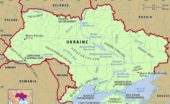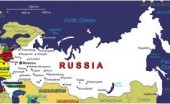Re Ian Bremmer 'Could third-party candidates upend the 2024 US election?' 3 April The current political movement in the USA…
Montreal 2015
Written by Diana Thebaud Nicholson // December 21, 2015 // Montreal // Comments Off on Montreal 2015
Tour de L’Île: The 49 Historic Communities on the Shore of the Island of Montreal
by Mackay L. Smith
Leonard Cohen’s Montreal
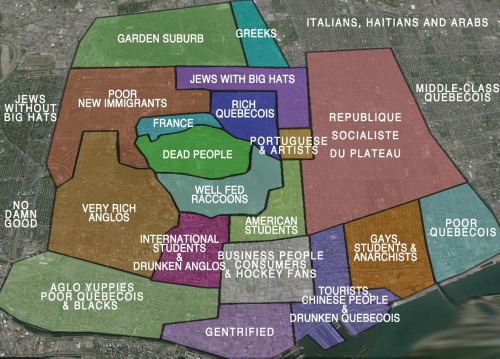 Downtown Montreal Stereotypes.
Downtown Montreal Stereotypes.
Reading cities: books about Montreal
Heather O’Neill takes us on a literary tour of the Québécois city – from Mordechai [sic] Richler’s sandwich shop to the superior streets of Leonard Cohen’s early novels
(The Guardian) My dad and I used to eat hotdogs on Saturdays at the Montreal Pool Room on St Laurent Boulevard in the red light district. There was a map of Montreal on the wall. There was a teenage prostitute in a sailor hat at a table reading comics and drinking cola. As I sat on the stool with my legs dangling over the side, my dad would tell me stories from people he knew from the neighbourhood. It was natural that my novels, Lullabies for Little Criminals and The Girl Who Was Saturday Night, would take place in this neighbourhood, with those characters. So many other writers have used Montreal as a backdrop. Here are some that spring to my mind. (29 October)
Former rivals Mélanie Joly, Denis Coderre ‘happy’ together now
Federal heritage minister challenged Coderre in Montreal’s 2013 mayoral election
Joly and Coderre said they discussed federal-municipal partnerships around Montreal’s 2017 celebrations to mark 150 years of Confederation and the 375th anniversary of Montreal’s founding.
However, no concrete measures were announced.
Funding for infrastructure related to those events and the City of Montreal in general was also on the agenda.
Coderre, himself a former Liberal MP, said he also spoke to Joly in her capacity as MP for the Montreal riding of Ahuntsic about local needs.
“I think it’s important and interesting to get a sense of what the government of Prime Minister Trudeau has in mind and where it sees the second largest city in Canada,” he said.
11 December
Montreal bans neonicotinoid pesticide to help save the bees
Researchers have linked use of neurotoxin to massive decline in bee colony
The City of Montreal is completely banning neonicotinoid pesticides in an effort to better protect the bee population.
SPECIAL REPORT | Bee researchers raise more warning flags about neonicotinoid pesticides
What’s killing Canadian honeybees?
Neonicotinoid insecticides affect reproductive rates of queen bees, study says
Neonicotinoids are nicotine-based insecticides that contain neurotoxins that make all parts of the plant harmful to insects feeding on them.
In Canada, the pesticides are used in coated seeds in the cultivation of more 50 different fruits and vegetables.
Researchers believe they are among the factors that have contributed to the massive decline in bee colony populations in North America in recent years.
2 November
Every bridge should have a toll: Canada’s Ecofiscal Commission
(CJAD) The decision to have a toll on the new Champlain Bridge may still be up in the air, but a new report says not only should the Champlain have a toll, but every bridge should be pay as you go.
The report “We Can’t Get There from Here: Why Pricing Congestion is Critical to Beating It” by Canada’s Ecofiscal Commission says adding a toll to all bridges and tunnels in Montreal would be better for the city, environment and Montrealers.
“Traffic congestion costs Canadians. It slows economic productivity, raises the price of consumer goods, damages health, creates pollution, and lowers quality of life” said the Commission.
The idea is to have fewer cars on the road during peak times; tolls would encourage commuters to use different modes of transportation, such as carpooling or public transit.
“Excess traffic congestion is costly for several reasons. It takes valuable time away from drivers, but also from other road users, such as passengers of public transit” said the report.
“Congestion increases the cost of commercial transport, thus increasing the prices of goods and services for everyone, regardless of where they live.”
It’s estimated traffic has about $2 billion worth of “hidden costs” for drivers, businesses and the government in Montreal.
The Commission found a variable toll would be the best option, with higher pricing during peak hours, and lower pricing the rest of the day.
15 October
Montréal International welcomes ABB’s decision to locate its Canadian headquarters in Greater Montréal
ABB will establish a world-class center in Technoparc Montréal. This major investment of $70 million over 10 years will contribute to the development of ABB’s advanced technology solutions. The new 300, 000 square feet facility will unite under one roof the 700 employees presently spread across six locations in Greater Montréal. This campus will house the corporate headquarters, as well as research and development, manufacturing, assembly and testing for ABB’s energy value chain in Quebec. It will include, among other things, spaces for technological demonstrations and for training clients on solutions and systems developed by ABB. It will be equipped with ultra-modern equipment and boast advanced technologies and manufacturing processes.
14 October
Montreal sewage dump plan ordered on hold by federal government
Mayor Denis Coderre blasts feds for halting Sunday’s plan to dump 8 billion litres of sewage into St. Lawrence
Montreal Mayor Denis Coderre blasted the federal government Wednesday evening for being “irresponsible” by halting the city of Montreal’s plans to to dump eight billion litres of raw sewage into the St. Lawrence River.
Coderre’s comments came about three hours after Canada’s environment ministry released a statement. In it, Environment Minister Leona Aglukkaq said she has “instructed Environment Canada to immediately have an independent expert scientific review of all information related to this project conducted.”
8 October
Montreal’s sewage dump saga explained in 5 key points
City plans to dump 8 billion litres of sewage into St. Lawrence River from Oct. 18-25
(CBC) 1. Why does the city need a plan to divert eight billion litres of sewage?
Major construction work to lower the Bonaventure Expressway to street-level in downtown Montreal requires moving a snow dump, which is connected to a big sewer. This sewer’s pipe measures five metres in diameter and normally carries sewage to the city’s water treatment plant. However, in order to carry out the work to move the snow dump, the sewer’s pipe must be drained.
There’s also another reason that the interceptor sewer must be drained: the city must remove old, wooden building hoops that have started to detach from the structure. The pieces breaking loose could jeopardize water treatment.
The eight billion litres of wastewater would flow directly into the Saint Lawrence River via 26 interceptors, which correspond to areas used for sewer overflow during heavy rains. …
Environmental activist Daniel Green, who’s also running for the Green Party, believes it would be best to carry out the plan in winter.
“The City of Montreal could, for example, work in February and dump this wastewater when there is no migration of ducks and other migratory birds, and when there are no hunters, fishermen or boaters on the river,” Green said.
The École Polytechnique weighs in: Position d’experts de Polytechnique Montréal sur les déversements planifiés d’eaux usées de l’intercepteur sud-est à la Ville de Montréal
Montreal sewage dump ‘shameful’: Erin Brockovich
Celebrity environmental activist Erin Brockovich has chimed in on Montreal’s pending sewage dump, calling the plan to dump eight billion litres of raw sewage into the St. Lawrence River “ridiculous and shameful.”
Brockovich is part of the growing public outcry over the controversial plan that has been described as “the lesser of two evils” by Montreal officials.
Biodôme and Insectarium to close for major renovations
Biodôme to close for over one year starting next fall
The Biodôme will be souped up with a larger lobby and improved mezzanine, as well as an expanded sub-polar section that will cost $22 million.
Another $23 million will be spent on renovations to the Insectarium, which will require the facility to close starting sometime in 2018, following the completion of celebrations surrounding the 375th anniversary of Montreal in 2017.
20 September
Province bulldozes archeological site of 18th-century Tannery Village
Transport Quebec has destroyed the last vestiges of the 18th-century Tannery Village even though excavation was expected to continue for another week.
The destruction of the archeological site at the intersection of St-Jacques and St-Rémi Sts. was done on the sly and without notice Saturday morning, said Anne-Marie Sigouin, Projet Montréal councillor for Saint-Paul–Émard. The opposition party was to table a motion at city council Monday asking Transport Quebec to study possibilities to preserve at least part of the site.
Sud-Ouest mayor Benoît Dorais and citizens’ groups had lobbied for the site to be preserved, but neither Montreal nor Quebec would step in to save the village, which is in the path of an area to be used by 100 million vehicles, Quebec Transport Minister Robert Poëti had said.
2 September
Social housing, public transit top Montreal mayor’s federal wish list
Denis Coderre talks bridges, Canada Post, Port of Montreal, supervised injection sites, pipelines
The mayor of Montreal has a $2-billion wish list for the winner of the next federal election.
On Wednesday, Denis Coderre — who was previously an MP and Liberal cabinet member — outlined the areas he wants more federal funding for in Montreal, including:
$201 million a year for social housing ($185 million for building construction, renovation and upkeep, and $16 million for other measures.)
$200 million a year for public transit, with funding based on usage and not on population.
$77 million a year for infrastructure, with funding based on municipalities’ population densities.
$10 million a year for public security.
$1 million a year for radicalization prevention programs.
He said the federal government’s contributions to Montreal have to reflect the city’s importance to the Canadian economy.
Coderre also mentioned a number of Montreal-related issues that he wants to make sure the federal candidates don’t forget about:
Montreal’s continued rejection of tolls on the new Champlain Bridge and the end of door-to-door mail delivery.
Federal funding for Montreal’s 375th anniversary, including the lighting of the Jacques-Cartier Bridge.
Supervised injection sites — Coderre asked the federal government to uphold the Supreme Court’s decision in the matter and grant exemptions so that Montreal can establish such sites.
Transferring authority of the Port of Montreal to the city and providing funding to rebuild part of the port to accommodate more cruise ships.
Ensure the government enforces the National Energy Board’s authority over the Enbridge and TransCanada pipelines that cross through southern Quebec.
Reinvestment in Radio-Canada, which is headquartered in downtown Montreal.
28 August
‘Iconic’ park will rise from former St-Michel dump
What was once a quarry and garbage dump that has marred the city’s St-Michel district for decades will soon become one of Montreal’s — if not the world’s — most iconic parks, Mayor Denis Coderre said on Friday.
The St-Michel Environmental Complex will be transformed into the city’s second-largest park, behind Mount Royal, beginning with several new sections that are to be opened to the public for the first time in 2017, in time for the city’s 375th birthday. The project is slated to be completed by 2023, Coderre said.
Un « central park » pour Montréal
M. Coderre n’a pas encore de nom pour ce futur parc. Il croit néanmoins qu’un hommage à Frédéric Back serait de mise.
Le site est vaste : 192 hectares, soit à peu près la même superficie que le parc du Mont-Royal. Or, pour l’instant, il y a peu de verdure en ces lieux.
La transformation du dépotoir en un parc se fera par étapes jusqu’en 2023. L’accès au site devra aussi être amélioré puisqu’il est difficilement accessible aux personnes qui se déplacent en transport en commun ou à pied.
Philippe Pichet: 5 things to know about Montreal’s new police chief
Longtime member of force to be sworn as top cop today at city hall
4 August
Activist decries Coderre’s approach to development
Mayor Denis Coderre’s approach to dealing with development projects is “willy nilly” and is sending Montreal back to an era when a lack of planning and a disregard for heritage and consultation reigned, says architect and urban planning activist Phyllis Lambert.
Riled by Coderre’s defence of a plan by a developer to gut part of the Maison Alcan complex on Sherbrooke St. W. to erect a 30-storey office tower, the mayor’s recent pronouncement in favour of largescale residential construction on natural space in Pierrefonds and plans to raise the permitted height of highrises in such disparate places as the Gay Village, Lambert says it’s a throwback to the era of Jean Drapeau, when a strong-willed mayor determined what projects got the green light. GO PHYLLIS LAMBERT!
31 July
Turcot Interchange work leads archaeologists to 18th century village
Archaeologists working closely with construction workers below the Turcot Interchange have spent the summer uncovering what they say are the remains of an 18th century village.
St-Henri-des-Tanneries, a small settlement occupied during the 18th and 19th century, has now been archeologically documented for the first time, said Frank Rochefort, the lead archeologist working on the project for Quebec’s transport ministry.
The idea to search the area was first pitched after a 2008 study identified that the land could potentially be concealing the remains of the village. In May, diggers found what they were looking for near the corner of St-Rémi and St-Jacques St.: at least three foundations from homes built in the 19th century.
Victor Schukov: Why does West Island get short shrift from tourism industry?
How come most of the tourism industry doesn’t know about the West Island collective?
Almost begrudgingly, [Wikitravel] lists the obvious hits: Pointe-Claire Village, Sainte-Anne-de-Bellevue Village, Ecomuseum, Arboretum, MacDonald Campus experimental farm, Cap-Saint-Jacques Nature Park, and Quinn Farm.
Hey, Wiki, you missed a few: The Canadian Aviation Heritage Center (coincidentally, also on MacDonald Campus), our 70-kilometre Heritage Bicycle Trail and a little region we like to call Le Suroît, comprised of St-Lazare, Vaudreuil–Dorion and Île Perrot, named after a warm southwesterly breeze.
20 July
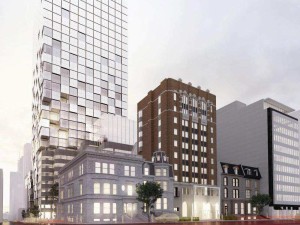 Proposal for Maison Alcan is ‘brutal,’ critics say
Proposal for Maison Alcan is ‘brutal,’ critics say
By Marian Scott
The Maison Alcan was the brainchild of former Alcan CEO David Culver, a passionate Montrealer with a deep love for Sherbrooke St
But 32 years later, part of the award-winning complex at Sherbrooke and Stanley Sts. and an adjacent building could face demolition to make way for a 30-storey commercial tower.
The proposed redevelopment has quietly passed several regulatory hurdles and could get the go-ahead from the Ville-Marie borough on Sept. 9.
A register that would have allowed local residents to demand a referendum on the project — a legal requirement for projects involving zoning exemptions — was held at the height of summer vacation and close[d] Monday.
Rio Tinto Alcan, which sold the Maison Alcan to the Cirque du Soleil two years ago, is moving out in early 2016 to the new 26-story Deloitte Tower, near the Bell Centre. (Land registry records still list Alcan as the owner.)
But critics warn the new project would disfigure an iconic complex featured in tourist guides and architectural textbooks as a bold departure from the usual glass towers that dominate the cityscape. …
The plans by Cirque du Soleil, Yale Properties Ltd. and the architectural firm Lemay & Associés call for demolition of a former armoury dating from 1920 at 2055 Drummond St. A seven-storey office building at 2050 Stanley St. built in 1981 as part of the Maison Alcan project would also be razed.
The ground floor of the 30-storey tower and adjoining buildings would house shops, entertainment venues or exhibitions, with offices on the upper stories, according to the proposal.
When he inaugurated the former Alcan world headquarters, built at a cost of $43 million, in 1983, Culver called the project “the realization of an old dream — to maintain a small but valuable part of Montreal in the style and dignity that is worthy of its heyday.”
Growing up just up the hill from the Maison in the Golden Square Mile, Culver said at that time that he had “always regarded Sherbrooke St. as one of Canada’s most attractive and distinguished streets” and considered himself fortunate to play a role in enhancing it.
On Friday, Culver, 90, said he had hoped that the new owners would breathe new life into the Maison by making it accessible to the public as in the past.
“I have a lot of affection for the old building,” he said.
“I don’t really have much say in what happens to it but I hope they bring life back to it,” added Culver, recalling free concerts Alcan held in the 1980s in the atrium of the Maison, then home to the popular Atlantic Pavilion and La Tulipe Noire restaurants. The company also sponsored the Alcan Lectures on architecture.
No signatures as Maison Alcan referendum deadline passes
Eliot Perrin, registrar at the Lake St. Louis Historical Society, who works across the street from the building, told the Montreal Gazette that he and many of his colleagues wanted to sign the register, but were unable to do so because of “incredible hurdles.” … City spokesperson Richard Bergeron, an independent councillor and member of the executive committee, said the city has followed the law on urban planning.
8 July
Cabot Square reopens after year-long renovation
For as long as many Montrealers can remember, Cabot Square was somewhere to avoid, especially at night when the few who entered were either homeless or cops on patrol.
Sandwiched between two relics — the famed old Forum to the north and the former Montreal Children’s Hospital to the south — the square had become a public eyesore and yet another reminder of Montreal’s steady decline.
A year ago, work began to refurbish the site and on Wednesday civic officials were on hand to reopen the square that pays homage to the Venetian explorer Giovanni Caboto (1455-1498) who, among other things, is credited with discovering Newfoundland, albeit hundreds of years after the Vikings landed there.
A variety of musical, artistic and cultural exhibitions will be held at the square most days till Aug. 7.
6 July
Montreal’s Place Ville Marie makes room for the view
Construction workers mill about, prepping the empty floor to become a world-class tribute to Montreal. When it’s done, it will be an observation deck with sweeping views of the city – the skyscrapers, the mountain, the St. Lawrence River, the Big O – unadulterated from such great heights. A glimpse below, meanwhile, reveals a new street-level local market in the public square next door, slowly filling with lunchtime shoppers.
Ivanhoé Cambridge is investing in history to distinguish itself in an office market where demand is falling below supply. With Place Ville Marie as its crown jewel, the landlord is in the midst of a $1-billion investment program in the city, hoping to affirm its dominance in Montreal’s core.
5 June
International Economic Forum wants to put Montreal on the map
(Montreal Gazette) Montreal is an event-driven city. Think of the Grand Prix, the jazz festival, the Just for Laughs festival, the Rogers Cup tennis tournament.
Gil Rémillard wants that same spirit to animate the Conférence de Montréal, billed as the International Economic Forum of the Americas.
The 21st edition of the conference begins Monday and Rémillard, the former Quebec Liberal cabinet minister who founded the event, sees it as the place to be for international decision-makers. …
This year’s edition, under the theme Building a Balanced Economy, is nothing if not far-reaching. Along with the economy, it tackles such issues as governance, pensions, energy, infrastructure, sustainable development, international trade, innovation and health care.
Conference co-chair Patrick Pouyanné, chief executive of French petroleum giant Total SA says the conference provides an opportunity to reconsider the role of energy development in a period of falling petroleum prices.
The oil and gas industry has to be part of the solution in fighting climate change, he added. This week, Total was one of six major oil companies calling on governments around the world to adopt a global carbon pricing system.
Other speakers include General Electric chief executive Jeffrey Immelt, who will focus on the technological revolution in the manufacturing industry, and former French presidential candidate Ségolène Royal, who will address the issue of sustainable development.
Michaëlle Jean, secretary general for the International Organisation of La Francophonie, will talk about new trade opportunities within that group while Christian Noyer, governor of the Bank of France and chairman of the Bank for International Settlements, addresses the risks in the global financial system.
28 May
Robert Frank: City core needs back-to-basics strategy
Montreal urban planners and real estate developers need to move swiftly to plug some long-term gaps, advised Richard Highland. Flourishing condo construction has made it easy to reside downtown, but the modern infrastructure needed to sustain the flood of inmigration simply hasn’t been built.
“If you can’t live and work in the city core, it won’t work in the long run,” cautioned Kevric’s ceo. “Toronto has woken up, and Montreal needs to do likewise.”
“Not one new school has been built downtown,” he observed. “Everyone agrees that we need them. We need parks, police and fire stations too. The question is: Who will pay?”
20 May
Editorial: Royalmount project raises questions
A major issue is how Royalmount would affect Ste-Catherine St. The commercial artery is slated for a $95-million investment that includes heated sidewalks, room for terrasses and adjacent public squares. And what about other commercial streets in the West End, and nearby malls like Marché Central, Rockland Centre, the shopping complex at Jean Talon W. and Décarie, and Place Vertu? The developers claim Royalmount will help win back some of the $3 billion in retail sales currently being spent at premium malls off island anyhow. But competition is fierce enough already without adding new retail.
There are also questions about traffic in a chronically jammed area.
Do we need this? Sounds ill-conceived and a traffic nightmare
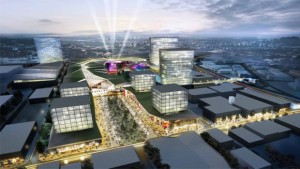 Royalmount mega-mall, unofficially dubbed ‘Quinze40’, to feature waterpark, outdoor cinema
Royalmount mega-mall, unofficially dubbed ‘Quinze40’, to feature waterpark, outdoor cinema
Carbonleo unveils $1.7B project for Town of Mount Royal, slated for 232,257 square metre site
Commercial real estate developer and manager Carbonleo has unveiled plans for its much-anticipated and controversial mega-mall, slated for the Town of Mount Royal.
Up until today, the $1.7 billion dollar centre had been unofficially dubbed the “Quinze40” because it’s near where Highway 40 meets Highway 15 and because it’s being developed by the same company behind the South Shore’s DIX30.
But Carbonleo unveiled today that their latest project would be called the Royalmount centre, because its main entrance will be on Royalmount Avenue.
The mall, not far from the De la Savane Metro station, will take up 232,257 square metres — an area almost the size of Parc La Fontaine.
14 May
Editorial: Smart design for Ste-Catherine St.
(Montreal Gazette) as the city contemplated a major overhaul of Montreal’s flagship commercial artery, starting in 2017 to coincide with badly needed water main work, some of the proposals threatened to change irrevocably the character of the busy, buzzing lifeline of stores, restaurants and offices that stretches through the heart of downtown. Fortunately, the plans unveiled this week by Mayor Denis Coderre strike the right balance between adding novelty and respecting Ste-Catherine St.’s core mission. The beauty of the design is its flexibility: It will allow the street to evolve with the seasons, occasions and times without necessitating more costly reconstruction.
[The new and improved stretch of Ste-Catherine St. spanning 2.2. kilometres from Atwater to Place des Arts will feature heated sidewalks, more trees and places to sit for a rest. A short section of those sidewalks spanning 300 metres will be vastly widened by removing parking lanes between Aylmer St. (next to the Bay) and McGill College Ave., allowing more room for pedestrians, trees and restaurant terrasses.
On the rest of the 1.9-kilometre segment, the sidewalks will remain the same width, but the lanes now reserved for parking will be raised slightly, setting them off from the road, so that they can be used both for parking, but also transformed into pedestrian walkways, terrasse spaces or food truck spots as needed during festivals or special events. Two lanes of traffic will remain, but speed limits will be reduced to 30 kilometres an hour to ease the coexistence of cars, buses and cyclists.]
Montreal and neighbours join lawsuit against Canada Post
The ambitious but much-criticized project to replace door-to-door-delivery with super mailboxes got a firm “Return To Sender” message Thursday from four Quebec cities, including the Big Three of Montreal, Laval and Longueuil.Westmount, where Mayor Peter Trent has been a vocal foe of the conversion plan from the beginning, rounds out the foursome that joins the Canadian Union of Postal Workers’ lawsuit against the federal Crown corporation. But it was Coderre, in fighting form, who took the Crown corporation to task for its cavalier approach and questioned the very raison d’être of its five-year conversion plan that was apparently mandated to deal with declining mail volumes and shifting consumer trends (i.e. less snail mail because of more 21st century digital mail).
12 May
Magnan’s Tavern goes to pieces at public auction
Only leftovers were available Tuesday at Magnan’s Tavern in Pointe-St-Charles, the remains of its 82-year history carved into small lots and sold to the highest bidders at a public auction.
Everything from steak knives to wooden chairs and mounted newspaper clippings were liquidated to a couple of dozen buyers focused on bargains, not nostalgia.
6 May
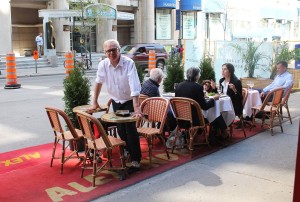 Montreal has decided to regulate terrasses, requiring owners to set up at least 1.8 metres from the building and/or build strange wooden enclosures that protrude into the street (and eliminate parking spaces). The by-law has been on for a while but Hell hath no fury like our friend Beryl when his beloved Alexandre was forced to remove its chairs and tables. It’s a good thing that Beryl dropped out of the nomination race in Mount Royal, now he can devote his energies to fighting this bigger battle. We suspect it will be epic!
Montreal has decided to regulate terrasses, requiring owners to set up at least 1.8 metres from the building and/or build strange wooden enclosures that protrude into the street (and eliminate parking spaces). The by-law has been on for a while but Hell hath no fury like our friend Beryl when his beloved Alexandre was forced to remove its chairs and tables. It’s a good thing that Beryl dropped out of the nomination race in Mount Royal, now he can devote his energies to fighting this bigger battle. We suspect it will be epic!
It seems Alexandre has temporarily caved.
27 April
Royal Victoria-MUHC move went ‘better than expected’
154 patients transferred to new site without incident
The move from the Royal Victoria emergency department to the new superhospital went “better than expected,” a spokesperson says.
On Sunday, 154 patients were transferred from the old hospital’s emergency department to the new McGill University Health Centre (MUHC) facility, hours ahead of schedule.
- Royal Victoria patients move into new superhospital
- New MUHC virtual tour: Emergency room
- CBC goes behind-the-scenes at the new MUHC superhospital
Ambulances departed from the Royal Vic every three or four minutes beginning at 7 a.m. until the final patient arrived at the new site at 12:25 p.m.
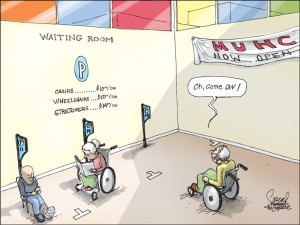 MUHC urged to review parking fees at the Glen site
MUHC urged to review parking fees at the Glen site
(Montreal Gazette) Prohibitive parking fees at hospitals are a “tax on disease” that must be kept to a minimum — and a Montreal city councillor is urging the government to regulate the situation.
As patients begin to complain about the $25 full-day parking fee at the new McGill University Health Centre at the Glen, the city’s executive committee member responsible for infrastructure plans to present a motion at his borough council meeting next week calling on the provincial government to review its policy on parking rates at public health-care institutions.
The two parking structures were built at a cost of $141.4 million, but it is self-financed construction, so the parking revenue will repay the initial investment as well as maintenance costs. If every visitor spot at the Glen was used every day, it would represent $14.4 million annually in revenue. However, the real revenue should be substantially higher because a spot reaches the maximum fee of $25 after only 90 minutes, meaning there could be multiple “full-day” fees paid for each parking spot.
In 2011, the Canadian Medical Association Journal strongly advocated for abolishing hospital parking fees, saying in an editorial that they are user fees in disguise.
26 March
Quebec premier appeals to Cirque founder to keep head office in Montreal if sold
Couillard told reporters in Quebec City that Guy Laliberte is one of Quebec’s great entrepreneurs and the Cirque is a huge source of pride for the province.
The premier said it’s not only important that the international headquarters and its almost 1,500 workers stay in Montreal, but that the Cirque’s creative activities should also remain in the city.
Caisse seeks minority stake in Cirque du Soleil
The Caisse de dépôt et placement du Québec is vying for a minority stake in the Cirque du Soleil as political opposition mounts over the prospect of a foreign takeover of the famed Montreal circus company.
According to people familiar with negotiations, the Caisse has made overtures to potential suitors that it would like to join the winning bid for the Cirque du Soleil by acquiring a minority stake of about 10 per cent. These sources said the Caisse, Canada’s second-largest pension fund managers by assets, is reluctant to buy a bigger stake because the production company is in need of significant capital to revitalize some of its struggling shows and expand into new foreign markets.
Lost treasures found during MUHC move
Whenever you move, you find lost treasures hidden in the garage or stuck behind the fridge. Imagine the things that you find when you’re preparing to move an entire hospital.
25 March
Marcus Gee–Sister cities: Can Toronto and Montreal set aside their sibling rivalry?
(Globe & Mail) Forget about the two solitudes. Montreal Mayor Denis Coderre says he wants Montreal and Toronto – leading centres of French and English Canada, and great rivals for generations – to become sister cities.
He says that the two need to work together on solutions to common urban problems. Together, he says, they may have more luck persuading Ottawa to take cities seriously.
13 March
McGill dreams big with Royal Victoria redevelopment plan
McGill University’s $1-billion dream of moving into the soon-to-be vacated Royal Victoria Hospital received some good news Friday with the announcement Quebec is prepared to invest $4 million in a feasibility study.
In a video presented to the board of trade, McGill outlined its vision of gutting the 120-year-old institution, preserving its heritage buildings but tearing down other buildings to create structures housing classes, research facilities and administrative offices. It also plans to open public pathways to Mount Royal, turn parking lots into green spaces and build a 2,000-seat convocation hall/atrium that could be used by the community.
12 March
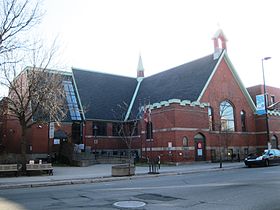 Mordecai Richler gets his glory: Montreal renames library after him
Mordecai Richler gets his glory: Montreal renames library after him
What Mordecai Richler would have done with material like this.
(Globe & Mail) The Jewish son of a scrap dealer becomes a literary giant, and dies. The befuddled and broken city he needled relentlessly and helped make famous tries to rename in his honour a urine-soaked alley near one of his former drinking holes. His family respectfully declines. The city names a gazebo after him. It soon falls into such disrepair the homeless won’t even sleep in it. They can’t – the floor has rotted away.
Finally, on Thursday night, 14 years after Mordecai Richler’s death, a solution: In a French borough filled with the nationalists he regularly sent up, the city renames a library filled with French books housed in a converted Anglican church. Henceforth, the works of a satirist who showed no mercy on authority will be shelved at the Bibliothèque Mordecai-Richler in the glow of five-metre stained-glass windows depicting the crucifixion of Jesus Christ.
“A library in Mile End. It’s perfect,” Mr. Richler’s son Jacob said in a simple and dignified ceremony at Montreal City Hall. “The fact it’s located in a former Anglican church somehow makes it a little more so.”
It may just be that 14 years were needed, according to the author’s wife, Florence Richler, who beamed throughout the ceremony.
9 March
Anti-radicalization centre to be set up in Montreal
Mayor Denis Coderre says goal is to strike balance between ‘openness and vigilance’
“The city and its partners will deploy all resources required by the Prevention Centre to get it up and running as soon as possible. It must have means to put a stop to the radicalization process and to minimize the number of radicalized individuals who go on to commit violent acts.”
The centre, the first of its kind in Montreal, will involve partners from various sectors, including health and social services, public safety and education.
Human rights lawyer Julius Grey was skeptical of the new centre and the hotline in particular. … Grey also questioned whether “radicalization” relates only to Muslim radicals, or if other groups would fall under the same banner.
28 February
Matthew Hays: W[h]ither the Gazoo?
My thoughts on the latest round of buyouts at the Gazette. They’ve just lost two of their best writers
(Rover) As I watch more people leave the city’s English-language daily, I can’t help but be reminded of the late great journalist Molly Ivins’ lament about the crisis newspapers were facing: newspaper owners had an odd solution to the problem of evaporating readership, she argued, and that was to make “our product smaller and less helpful and less interesting.” Indeed, newspaper and magazine publishers have been responding to the crisis by giving people less reason to pick them up.
24 February
Opinion: Urban growth in Montreal belongs in the central part of the city
The Coalition communautaire de Milton-Parc pour l’accès au logement et à la santé is a coalition of 15 local organizations that was founded two years ago, initially to save the Hôtel-Dieu hospital from being sold to private developers. We have grown from then to advocate for the development of a wider neighbourhood, with projects that meet its need for health and housing, as a model for urban renewal.
We are referring to St-Urbain Street between Duluth and Milton.The two soon-to-be emptied hospitals are ideally suited to become single-room (rooming house type), or studio (including their own kitchen and bathroom) housing. Both hospitals are in very good condition. They can serve as front-line health services (emergency, clinics, day surgery), CHLDs (long-term health care), housing for low-income seniors or other singles and for those persons currently homeless.
17 February
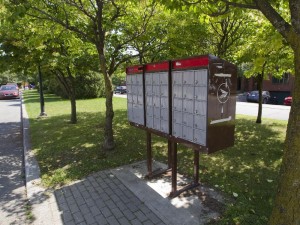 City committee recommends joining legal fight against community mailboxes
City committee recommends joining legal fight against community mailboxes
“We’re taking a hard line,” Sud-Ouest borough Mayor Benoit Dorais, chairman of the commission on social development and Montreal diversity, said in an interview Tuesday night before unveiling the recommendations at city hall. The commission’s 30-page report follows public hearings that were held last month on Canada Post’s plans.
Denis Coderre To Jewish Defence League: You’re Not Welcome In Montreal
The Jewish Defence League has said it wants to set up a chapter in Montreal following what national director Meir Weinstein called an increasing threat from Islamic radicalization.
16 February
Montreal office tower site may be an aboriginal burial ground
Canadian real estate developer Ivanhoe Cambridge is suspending construction on a new Montreal office tower after a freelance photographer expressed concerns that the site could be an ancient aboriginal burial ground.
Ivanhoe, the real-estate arm of pension fund giant Caisse de dépôt et placement du Québec, confirmed Sunday it has “voluntarily paused” preliminary excavation work at the downtown Montreal site while outside archeological specialists advise the company on the next steps to take.
The company’s decision to freeze construction comes after Montreal photographer Robert Galbraith raised concerns with both Ivanhoe and officials in Quebec’s culture and communications ministry that the site, a former parking lot between Mansfield and Metcalfe streets, could have valuable historical relics under ground. The situation highlights the sensitivity of questions pertaining to culture and history, as even a single citizen has the potential to influence progress on a $200-million project.
Mr. Galbraith said he believes the construction area, known by its address at 900 de Maisonneuve Ouest, could be part of what historians have identified as the Dawson archeological site. Covering an estimated two acres and studied by then-McGill College director William Dawson in the late 1800s, it was an ancient aboriginal village with remains that included tools and human bones.
13 February
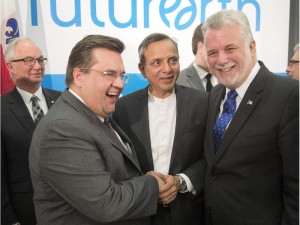 Strengthening Montréal and Québec’s commitment to supporting research into global environmental change – Mr. Paul Shrivastava appointed executive director of Future Earth international organization
Strengthening Montréal and Québec’s commitment to supporting research into global environmental change – Mr. Paul Shrivastava appointed executive director of Future Earth international organization
(Montreal International) Mr. Gordon McBean, President of the International Council for Science and Co-Chair of the Future Earth Governing Council, announced the appointment of Dr. Paul Shrivastavato head the Global Secretariat of Future Earth, the global research platform providing the knowledge and support to accelerate transformations to a sustainable world.
Montreal Gazette: Montreal lands Future Earth bureau
Montreal has landed an international secretariat coordinating research on climate change and sustainable development.
Quebec Premier Philippe Couillard and Montreal Mayor Denis Coderre announced at a news conference in Montreal on Friday that the city will be home to the main program office of Future Earth, which has a mission to support research and the shift toward sustainability.
Opinion: For the sake of our economy, Montreal needs special status
By Gary D. Shapiro, founder and chair of CRITIQ (Canadian Rights in Quebec)
(Gazette Opinion) Since a resolution to the endless sovereignty-versus-federalism debate is not on the horizon, our only option is a Montreal with significant special status. Mayor Denis Coderre agreed to special status for Montreal more than a year ago, and Premier Philippe Couillard agreed after coming to power last April, but as of today, the wheels have yet to be set in motion.
In the meantime, our city continues to lag behind all other Canadian urban centres. A recent survey of cities ranked Montreal 285th out of 300 in economic development, and in the past decade, Montreal’s economic growth was the lowest among Canada’s major cities. We are in debt, with a crumbling and decaying infrastructure, yet language and separation not only dominate the news, but affect day-to-day decisions and discussions. Haven’t we, the public, learned yet that someone has to pay for all of our social services?
6 February
Welcome to the 50 Most Inspiring Cities in the World
For the second year in a row, we present the GOOD City Index, a celebration of the 50 cities around the world that best capture the elusive quality of possibility. Wade through this year’s index and you will notice trends, quirks, contradictions, and surprises. But more than anything else, you will notice inspiration.
Montreal is #12 on the list – not too shabby!
Sure, gentrification has brought a somewhat uniform feeling to some of Montreal’s central neighborhoods—sipping coffee in one of the new downtown cafes can sometimes feel a little too twee—but Montreal is looking to the future. The city is fostering a budding startup scene, after opening its first tech campus earlier this year and offering tax credits for multimedia companies courtesy of the Quebec government. This year saw the blossoming of many new grassroots movements, from municipal workers’ protests to local residents taking an active interest in their neighborhoods’ green spaces. Montreal also sought to strike the right balance this year between becoming a global metropolis and staying true to its history, and citizens saw firsthand what can happen when they take an active stake in their city’s future. More
Stagnation city: Exploring Montreal’s economic decline
The Montreal skyline is dotted with construction cranes as an unprecedented building boom continues to unfold in condo and office construction. On the surface, at least, signs of prosperity abound.
But look a little deeper and you’ll see a city that’s slipping behind the rest of the country. Over the last decade, Montreal’s economy grew by an average of just 1.5 per cent — the lowest rate among Canada’s major cities. Personal disposable income is also the lowest among the country’s eight biggest cities, and unemployment is among the highest.
The bad news doesn’t stop there. Montreal is living through a period of crumbling infrastructure, widespread corruption, failed governance, inadequate fiscal power, low private investment, an exodus of head offices and an outflow of people.
Even the real estate activity that’s dominating private investment in Montreal these days is of some concern to economists. They point out that it’s largely speculative and does little to improve productivity, innovation or the knowledge base of the local economy.
1 February
Celine Cooper: We’re No. 2! We’re No. 2! (But there’s some bad news …)
The good news is that Montreal was recently ranked by the Economist Intelligence Unit (EIU) Safe Cities Index 2015 as the second-best place in the world to live. Toronto, our neighbouring metropolis to the west and Canada’s most-populous city, snagged the No. 1 spot, while Stockholm, Amsterdam and San Francisco filled out the top five. Not too shabby, Canada. …
Despite the fact Montreal continues to be a vibrant, exciting place to live, it’s not always an easy place to make a living. In terms of economic indicators, Montreal continues to struggle. This remains one of the city’s biggest challenges. There has been much discussion about Montreal’s dismal drop on the Brookings Institution MetroMonitor, which tracks economic growth of 300 cities based on their GDP per capita and employment rates. Last year, Montreal plummeted from 69th place in 2013 to 285th. It was one of the lowest performers on Brookings economic performance index, and the lowest of eight Canadian cities listed. These figures match up with other indicators: Statistics Canada reports that in 2014, the unemployment rate in Montreal was 8.2 per cent, above both the Quebec and Canadian averages (8.1 and 7.1 per cent respectively).
How is it that, on the one hand, Montreal can be ranked second-best place to live in the world, while at the same time find itself in the bottom rungs of a global economic ranking on the other? How do we square these two seemingly contradictory findings?
30 January
Josh Freed: Dreaming of snow-free sidewalks and a bustling downtown
Dear Mayor Coderre,
I have a dream! — for you
I’ve just returned from a world winter cities’ conference, held this year in Edmonton — and I have a two-word secret for you from urban planners I met from 10 countries.
Heated sidewalks — to make Ste-Catherine St. and eventually all downtown snow and ice-free. Better yet, it won’t cost a fraction of Drapeau’s billion-dollar baby.
I knew from a film I did about winter that heated sidewalks were common in Norway and Sweden — but I didn’t realize we were practically the only winter country on Earth without them.
At the conference, Finnish planners casually told me they’ve had them for years in Helsinki and other cities, as have Denmark and Iceland.
